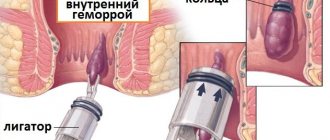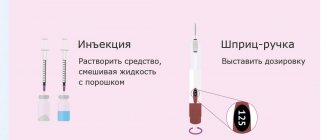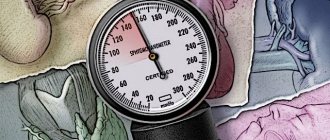What is pathology?
Blood leukemia in children is a malignant disease of leukocytes, i.e. white blood cells. The problem is that with this pathology, the bone marrow produces abnormal (mutated) cells that are unable to perform their protective functions. Instead, diseased white blood cells divide uncontrollably, preventing the body from producing red blood cells (red blood cells) and platelets (nuclear-free, flat cells responsible for blood clotting).
Based on the duration of the disease, two forms are described:
- acute (less than two years);
- chronic (over two years).
In the children's body, the first type occurs predominantly; it accounts for 97% of cases.
According to morphological type, they are distinguished:
- lymphoblastic leukemia in children (in this case, young, immature leukocytes – lymphoblasts) undergo mutations;
- non-lymphoblastic.
The second type includes a malignant lesion of the myeloid blood line (it is also called acute myeloblastic leukemia in children).
The acute form is characterized by dynamic development; as a result of this disease, anemia appears, the immune system is weakened, internal hemorrhages occur, and increased bleeding is observed. All this is accompanied by sensitivity to infections (children get sick very often).
Medical Internet conferences
Early diagnosis of oncohematological diseases in children is extremely difficult due to the nonspecificity of primary symptoms, which are often hidden under the “masks” of other diseases [2, 27]. Oncological alertness and knowledge of probable symptoms will allow the practitioner to diagnose this pathology earlier and, therefore, significantly improve the prognosis for the patient [1, 3, 4, 5].
In most children, acute lymphoblastic leukemia (ALL) manifests rapidly and is characterized by clinical polymorphism. The preleukemia stage does not have characteristic clinical symptoms [6, 7], and the analysis of the symptoms of the initial period is carried out retrospectively [7], and therefore the diagnosis is not made on time. Despite the progress of laboratory diagnostics, it is difficult to detect leukemia in children in the early stages, because For characteristic changes in the hemogram to appear, the tumor must reach a critical mass [4], and the manifestation of ALL is associated with blast infiltration of various organs with disruption of their function [8]. Clinical symptoms in this case are ahead of laboratory changes, and the child is not hospitalized in a specialized hematology hospital [55].
ALL occurs predominantly in children aged 0–15 years, with a peak incidence observed at the age of 2–5 years [54]. A more favorable prognosis and effect of therapy is observed in children from 1 to 10 years of age, while in children younger than 1 year and older than 10 years, ALL has an unfavorable course and is difficult to treat [46].
Gender differences:
Studies aimed at studying gender differences in ALL showed that in B-ALL the gender distribution was the same: boys - 51%, girls - 49%, while the T-variant was found predominantly in boys (90%).
Constitutional features. There is data in the literature on the connection between the onset and course of the initial period of ALL with the constitutional type of the child (asthenoid, thoracic-muscular, digestive): the most severe course is observed in children with a digestive body type [55].
Predisposing factors. When diagnosing ALL, the doctor must take into account a wide range of predisposing factors that can lead to the development of ALL: socio-economic status of the child’s family, chromosomal abnormalities, Down syndrome, neurofibromatosis, variable immunodeficiency, Ig A deficiency, Fanconi anemia, Shwachman syndrome, congenital X- linked agammaglobulinemia [56].
In the clinical picture of acute lymphoblastic leukemia, 5 main syndromes are most common (Table 1):
- Intoxication syndrome. Most often, patients are concerned about prolonged fever of unknown origin, intoxication of varying degrees, weakness, fever, malaise, and weight loss. Fever may also be associated with the presence of a bacterial, viral, fungal or (less commonly) protozoal infection, especially in children with neutropenia [7].
- Osteoarticular syndrome. Manifestations from the musculoskeletal system are detected mainly in children with B-cell ALL, which is characterized by less involvement of extramedullary organs and unclear changes in the peripheral blood [18]. Osteoarticular syndrome is often the first manifestation of ALL in children [9, 10]. Studies have shown that in patients with ALL, osteoarticular syndrome was recorded in 54% of cases, with a higher frequency in children from 1 to 9 years of age. The presence of joint pain was noted in 16.2% of children with ALL, arthritis in 26.6%, and changes in gait in 32.8%. Large joints were most often affected: knees - 10.6%, ankles - 9.4%, elbows - 4.4%, shoulders - 3.6% [11]. Upon examination, swelling of the joints, the presence of effusion, and dysfunction of the affected limb were revealed [12]. Patients often complained of frequent and multiple fractures, which may be due to osteoporosis [13]. Clarifying diagnosis is also necessary if recurrent multifocal osteomyelitis is suspected [14]. Acute lymphoblastic leukemia in rare cases manifests itself as osteoarthritis, the incorrect interpretation of which can lead to errors in differential diagnosis with juvenile rheumatoid arthritis (JRA). Children with ALL have asymmetric oligoarthritis, which is manifested by fever, pallor, arthritis, night pain, and bone pain [19]. Damage to the skeletal system at the onset of ALL is characterized by polymorphism of radiological manifestations. In some cases they are uninformative (only a slight periosteal reaction is revealed) [15], in other cases osteolysis, osteopenia, osteosclerosis, pathological fractures, periosteal reactions and mixed lesions in the form of lysis-sclerosis were detected [16]. An important symptom is the discrepancy between clinical symptoms and radiological data. The combination of hyperthermia, intoxication and articular syndromes can mimic septic arthritis. However, the lack of an adequate response to antibacterial therapy allows one to suspect ALL. The pathological process in this case develops as a result of metaphyseal sclerosis [3]. Intractable pain and joint syndromes characteristic of juvenile idiopathic arthritis must be considered from the standpoint of differential diagnosis with ALL [16]. Similar clinical symptoms in combination with pancytopenia are characteristic of necrosis of the bone marrow substance [17]. These data highlight the importance of including ALL in the differential diagnosis of musculoskeletal disorders even in the presence of apparently normal peripheral blood findings.
- Lymphoproliferative syndrome. Enlarged lymph nodes are associated with leukemic tissue infiltration [57]. The most often enlarged cervical, inguinal, axillary lymph nodes, which have a dense elastic consistency, are painless on palpation, are not fused with the surrounding tissue, are mobile, the skin over them is not changed. Some children may experience Mikulicz's symptom complex (simultaneous enlargement of lymph nodes in the submandibular, parotid and periorbital region). There may be a significant increase in the lymph nodes of the mediastinum, up to compression of the superior vena cava (shortness of breath, cyanosis, puffiness of the face, pasty eyelids, bulging of the jugular veins). Along with lymphadenopathy, in 75% of cases hepatosplenomegaly is detected, which is not accompanied by pain [2, 6].
- Anemic syndrome is characterized by increasing pallor with worsening general condition, dizziness and headache, shortness of breath, tachycardia [2].
- Hemorrhagic syndrome is associated with both thrombocytopenia and intravascular thrombosis (especially with hyperleukocytosis) [46]. Patients may complain of polymorphic hemorrhages (from petechiae to large hemorrhages) on the skin and subcutaneous tissue of various locations. Bleeding from the mucous membranes (nasal, gingival, gastrointestinal, renal, uterine) is observed [2, 58].
, clinical manifestations from other organs may be observed, and in some cases predominate [27] (Table 1).
- Lesions of the mucous membranes. One of the early symptoms of ALL in children is lesions of the oral mucosa in the form of erythema, ulcers and swelling of the lips, tongue, palate and gums [21]. Often the diagnosis is accompanied by difficulties in differential diagnosis with surgical pathology of the face. Thus, a case of ALL was described in a girl with swelling of the nasolabial area, which was regarded as phlegmon. The changes described above were associated with infiltration of the mucosa and soft tissues by blast cells [22].
- Skin manifestations. ALL in children in some cases manifests itself in the form of various skin manifestations, which are usually based on a leukemic infiltrate with damage to the skin and subcutaneous tissues. Localization can be different: the head area is affected in the form of small nodules [23], or other areas of the skin [24]. A case of skin lesions in the external auditory canal is described, in which the child was initially diagnosed with diffuse external otitis media [25].
- Eye lesions. Ophthalmological manifestations in patients suffering from acute lymphoblastic leukemia may also be its first manifestation [26, 27]. Complaints and clinical manifestations differ in polymorphism [28]. The most common sign of eye damage in ALL is hemorrhages in various parts of the eyeball: retina, subconjunctival hemorrhages [29]. When examining the fundus, swelling of the optic nerve nipple and vascular infiltration may be detected.
- Abdominal syndrome. Abdominal syndrome manifests itself in the form of abdominal pain of unknown etiology, alternating diarrhea and constipation, which is associated with lymphoid infiltration of parenchymal organs and the intestinal wall. In rare cases, ALL can be hidden under the “mask” of acute pancreatitis, which is difficult to treat [30], as well as typhlitis [31], which requires additional differential diagnosis.
- Damage to the genitourinary system. Clinical manifestations of kidney disease caused by malignant infiltration may be the primary manifestation of the disease in patients with ALL and are represented by acute renal failure [32, 33], renal arterial hypertension [34], palpable mass syndrome and bilateral nephromegaly, which must be differentiated from Wilms tumor [ 35, 36]. A feature of the clinical picture of acute renal failure in such cases is the absence of oliguria against the background of severe nephromegaly [37, 38]. In addition, there is evidence of the primary manifestation of ALL in the form of nocturnal enuresis in a child [39].
- Neurological symptoms. Neurological symptoms are not only a sign of the development of neuroleukemia in children with ALL, but may also be the only early clinical manifestation of the disease. The clinical picture is predominantly associated with damage to the cranial nerves (CN). In one case, with damage to the motor branch of the trigeminal nerve in a child, the only symptom was trismus of the masticatory muscles [40], and in another, with damage to the sensory branch, sensory neuropathy (Numb chin syndrome) was noted [41]. The primary manifestation of ALL in a number of cases was an isolated lesion of the abducens nerve with corresponding oculomotor symptoms [42, 43]. In addition to lesions of the cranial nerve, manifestations of neurodegeneration (Louis-Bar ataxia-telangiectasia) with corresponding immune and hematological disorders can also be observed in the clinic [44]. ALL can debut as a paraneoplastic neurological syndrome (PNS), manifested by acute muscle weakness of the proximal muscles of the upper and lower extremities [20].
- Lung damage. Respiratory system disorders may be associated with enlarged mediastinal lymph nodes, characteristic of T-cell leukemia, leading to the development of superior vena cava syndrome or respiratory failure. There may be leukemic infiltration of the lung tissue and/or hemorrhages into it. It is sometimes difficult to differentiate these complications from an infectious process [45].
- Disorders of mineral metabolism. Disorders of mineral metabolism that develop in ALL are characterized by hypercalcemia, which can be the first symptom of the disease [50, 51] or its complication [52]. In patients with hypercalcemia, complaints from the gastrointestinal tract and osteoarticular system prevail [53].
- Infectious diseases. In some cases, the onset of ALL can occur under the “mask” of some infectious diseases, for example, acute respiratory viral infection, infectious mononucleosis, tonsillitis, whooping cough, parawhooping cough, pneumonia, mumps [59, 60, 61, 62].
Hematological changes. The most important diagnostic test to suggest ALL is a complete clinical blood test with a leukocyte count.
Hematological changes in ALL do not have clear patterns, and often their severity may not correspond to clinical symptoms; changes in blood tests characteristic of ALL may be absent, which indicates a comprehensive assessment of clinical and laboratory data.
Most often, a hemogram reveals pronounced leukocytosis, while the number of leukocytes varies widely and depends on the type of ALL. Thus, the average number of leukocytes in children with the B-variant ALL was 37.1 ± 12.2*109/l, and in the T-variant ALL – 123.3 ± 36.5*109/l [63]. It is noted that forms of ALL with hyperleukocytosis have a more unfavorable prognosis [46].
Along with leukocytosis, blastemia is observed up to 80-90% [27], and a small percentage of blast cells does not provide grounds for making a diagnosis of ALL, while their absence does not allow it to be completely excluded [47, 64].
In rare cases, persistent unexplained hypereosinophilia (up to 80%) is observed at the onset of the disease, which can be combined with skin manifestations [48], and in 25-30% of cases - lymphocytosis. The cytopenic variant of ALL is characterized by leukopenia and absolute neutropenia [4]. An increase in the leukocyte pool leads to inhibition of other hematopoietic germs, which is accompanied by a decrease in the number of red blood cells and hemoglobin, as well as thrombocytopenia [27, 46, 65, 66].
A number of studies contain data on the development of metabolic lactic acidosis in the initial period of ALL [49].
Thus, the primary clinical manifestations of acute lymphoblastic leukemia in children are characterized by pronounced polymorphism, which requires doctors of all specialties to be oncological vigilant, a comprehensive assessment of the anamnesis, consistent analysis of clinical data from all body systems, and the use of an adequate set of laboratory and instrumental studies. In doubtful cases, the child should be referred for consultation to a pediatric hematologist-oncologist.
Why does this disease develop?
The exact causes of leukemia in children have not been established to date; only a number of dangerous factors that can lead to the disease have been identified.
First of all, it is called a genetic factor. The disease itself is not transmitted, we are talking about the tendency of cells to mutate. It has been noticed that those who have close relatives who suffered the same pathology get sick more often. It is also worth noting the connection with some congenital diseases (for example, with Down syndrome, the risk of developing a malignant process in the blood is 15 times higher than in healthy babies).
Radiation radiation, some chemical factors, as well as endogenous problems (immunodeficiency, hormonal imbalance) can cause the development and signs of leukemia in children.
Causes
The causes of oncological blood diseases have not been precisely established. It could be:
- genetic failure;
- abnormal development of blood cells;
- exposure to radiation;
- hereditary factor;
- poor environmental stop;
- consumption of carcinogens, etc.
Even a medical luminary is unlikely to be able to say exactly why a child, who does not yet have negative habits and does not eat harmful foods, develop an illness.
Main symptoms indicating pathology
Leukemia does not manifest itself in children with characteristic symptoms; this disease has only general signs that may indicate the development of any disease. Therefore, this diagnosis is often detected during an examination with suspicion of another illness.
At the same time, you can suspect the first signs of leukemia in children if you pay attention to such deviations as:
- increased fatigue (which is unusual in childhood, when, on the contrary, hyperactivity should be observed);
- shortness of breath during games;
- sleep disorders;
- poor appetite;
- pallor of the skin (often they have an earthy tint);
- high tendency to bruise;
- frequent bleeding (nose, gum);
- headache;
- unreasonably rising temperature.
The most striking symptoms of acute leukemia in children are long-term bleeding wounds after falls or cuts (this indicates poor clotting) and frequent illnesses.
Prevention
As such, there is no prevention of the occurrence of the disease. It is recommended to adhere to a properly balanced diet, walk more in the fresh air, avoid gas pollution, exposure to radiation, etc.
Dear parents!
Remember that only a qualified pediatrician can make an accurate diagnosis, determine the causes and nature of the disease, and prescribe effective treatment. You can make an appointment with our specialists or call a doctor at home by calling 8-800-700-31-69 Grow up healthy and happy!
How is this pathology diagnosed?
After the initial examination, the first thing the doctor will prescribe is a blood test for leukemia in children (this includes extensive research and biochemistry). Laboratory testing will show the presence of anemia, thrombocytopenia, and ESR will be increased. The most characteristic blood parameters for leukemia in children are such an anomaly as “leukemic failure”. Its essence is that between immature leukocytes and mature ones there are no obligatory transitional forms (young, segmented).
The pediatric diagnostic program must include:
- sternal puncture;
- bone marrow biopsy;
- trephine biopsy.
In addition, an examination by a pediatric neurologist or ophthalmologist is necessary. Additional are ultrasound of the lymph nodes, and, if necessary, of the liver, salivary glands and other organs (the need is determined by the doctor based on the results of the examination).
The first signs of leukemia in adults
Symptoms are nonspecific and have common features for many diseases. Manifestations depend on the massiveness of the lesion and its location.
The first signs of leukemia in adults:
- causeless low-grade fever, profuse sweating at night;
- weakness, increased fatigue;
- swollen lymph nodes;
- enlarged spleen and liver;
- joint pain;
- constant headaches;
- external manifestations associated with bleeding disorders: bleeding gums, bruises, nosebleeds, the presence of red dots under the skin.
What treatment methods are used
The main method of treating leukemia in children is complex chemotherapy. It consists of a combination of several specific anticancer drugs and glucocorticoid hormones in high doses. After the course, immunotherapy (interferon or other drugs) is mandatory.
Particularly important in treatment is a step-by-step approach, which is aimed at:
- achieve stable remission;
- secure it;
- carry out maintenance therapy;
- prevent possible complications.
In complex cases, stem cell transplantation, bone marrow transplantation from a donor, and platelet and red blood cell transfusions may be necessary.
Treatment
Our clinic’s specialists will provide qualified assistance to young patients with oncology. The medical institution has all the necessary equipment, as well as extensive experience in treating children with various stages of leukemia.
To prescribe treatment, the patient requires a comprehensive examination. At the initial stage, a blood test should be done. Next, X-ray and ultrasound examinations, tomography, biopsy, puncture, etc. are prescribed.
Focusing only on symptoms, it is impossible to identify the problem.
For therapy, the child is prescribed a course of chemotherapy. The drugs can be administered intravenously or taken orally. At the end of the course, maintenance treatment is prescribed. If therapy fails, the patient undergoes a bone marrow transplant. Most often, cells from a related donor are used for this. If this does not produce results, TCT from an unrelated donor is indicated.
About relapses and prognosis after treatment
As a rule, a relapse of this particular disease, if it exists, manifests itself directly during the course of treatment or immediately after its completion. After remission has been achieved and its consolidation (consolidation) has been carried out, after five years relapses are an extremely rare occurrence. After seven years, we can safely talk about a complete recovery.
Modern treatment methods suggest a favorable prognosis for acute lymphoblastic leukemia in children in 60-80% of cases. The indicator is influenced by an adequate therapy program (including the capabilities of a specialized clinic) and the general condition of the body.
The first signs of leukemia in adults and children
Leukemia is a blood disease characterized by disruption of normal hematopoiesis. The disease belongs to a malignant pathology. A pediatric hematologist-oncologist treats leukemia in a child. The true causes of the disease are still unknown. However, doctors identify a number of provoking factors, among which the main ones are:
- radiation exposure;
- high doses of chemotherapy (secondary leukemia);
- chromosomal disorders;
- immunodeficiency states;
- blood diseases;
- Down syndrome, Klinefelter syndrome.
The main causes of chronic leukemia in women are heredity and exposure to various mutagenic factors.
How does normal hematopoiesis occur?
Inside the bones there is bone marrow. In infants it is present in all bones, and by the age of 15 it is only in the skull, ribs, vertebrae, shoulder blades, and pelvic skeleton. Primary stem cells are located here, from which red blood cells, white blood cells and platelets mature. They differ from their descendants in shape, the presence of a nucleus, and the ability to divide and reproduce. But they cannot perform the “work” of mature cells.
After a certain time, normal cells “reach” the required state and enter the bloodstream ready to perform their functions. Analyzes very rarely reveal single blast (growing) forms.
Stages
Oncohematologists distinguish the following stages of acute leukemia.
- Initial. It proceeds secretly and lasts from several months to several years. Diagnosed only by bone marrow examination, as blood tests show only minor abnormalities in the white blood cell count and there are no symptoms.
- Expanded. The number of immature cells in the blood increases sharply, which leads to a deterioration in health and the appearance of initial symptoms of the disease.
- Remission. Manifestations of oncopathology decrease, however, a certain number of blast cells remain in the bone marrow (with complete remission - no more than 5%).
- Relapse. The number of immature cells in the patient's bone marrow and blood increases, and his condition worsens.
- Terminal. The most severe stage of the disease, which is characterized by numerous complications of acute leukemia: vital internal organs are affected, extensive bleeding, ulceration and tissue necrosis occur.
Hardware diagnostics
Some methods are used at the outpatient stage. Others are available only in specialized clinics.
- Cytometry involves passing a laser beam through blood that has been pretreated with antibodies. The method allows you to determine the saturation of cells with DNA. This is important for the treatment process (such cells are more sensitive to drugs).
- Genetic studies determine the breakdown of a specific chromosome, the hereditary mechanism of transmission of the disease.
- Chest X-ray can diagnose enlarged lymph nodes in the chest and abdominal cavities, and the thymus gland. This sign is confirmed by magnetic resonance and computed tomography.
- Ultrasound helps confirm enlargement of the liver and spleen, large lymph nodes.
- Bone tissue scanning is performed for differential diagnosis with bone tumors, infectious inflammation, and in case of unclear diagnosis.










